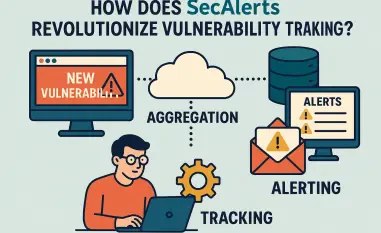In a world where cyber threats lurk behind every digital corner, a staggering statistic emerges: over 60% of organizations suffer breaches due to unpatched vulnerabilities, according to recent cybersecurity reports. Picture a sophisticated attacker exploiting a flaw in widely used software, gaining unchecked access to sensitive data within minutes. This is no longer a distant threat but a pressing reality flagged by the U.S. Cybersecurity and Infrastructure Security Agency (CISA) in its latest alerts targeting critical weaknesses in Microsoft, Kentico, and Apple products. The urgency to act has never been clearer as these vulnerabilities are already under active exploitation.
The importance of this issue cannot be overstated. CISA’s warnings are not mere advisories; they are a call to arms for federal agencies and private organizations alike to safeguard critical infrastructure against devastating attacks. With cyber adversaries moving faster than ever, often exploiting flaws before patches are applied, the stakes are high. Delaying action could mean the difference between a secure network and a catastrophic breach, impacting everything from government operations to corporate data integrity. This narrative dives deep into the latest threats, expert insights, and actionable strategies to protect systems from becoming the next target.
Why Hackers Stay Ahead of Defensive Measures
Cybercriminals often outpace security defenses by exploiting vulnerabilities in software that millions rely on daily. CISA’s recent alerts spotlight flaws in products from industry giants like Microsoft and Apple, as well as specialized platforms like Kentico, which are already being weaponized in real-world attacks. These gaps, often hidden in plain sight, provide attackers with entry points to escalate privileges or execute malicious code, leaving organizations vulnerable.
The speed at which these threats are exploited is alarming. Attackers frequently develop and deploy exploit code within days of a vulnerability’s disclosure, capitalizing on the lag time before patches are applied. This relentless pace underscores a harsh truth: traditional security measures alone are insufficient against adversaries who continuously adapt their tactics to target unpatched systems.
A notable trend amplifying this challenge is the increasing sophistication of attack methods. Hackers now combine multiple vulnerabilities—chaining flaws together—to maximize damage, as seen in some of the latest exploits identified by CISA. This evolving landscape demands a proactive approach, pushing organizations to rethink how they prioritize and respond to emerging cyber risks.
The Critical Role of CISA’s Known Exploited Vulnerabilities Catalog
CISA’s Known Exploited Vulnerabilities (KEV) catalog serves as a vital tool in the fight against cybercrime, pinpointing flaws that attackers are actively abusing. This resource, updated regularly, acts as a wake-up call for both federal agencies and private entities, emphasizing the need for swift remediation under tight deadlines, such as those mandated by Binding Operational Directive (BOD) 22-01. The catalog’s focus on real-world exploitation sets it apart from generic vulnerability lists, making it a cornerstone of modern cybersecurity strategy.
Failure to heed these warnings can lead to severe consequences. Historical data reveals that delayed patching often results in breaches costing millions in damages and lost trust. For instance, past incidents involving unpatched software have crippled entire networks, highlighting the domino effect of inaction. CISA’s insistence on rapid response reflects a broader shift toward urgency in addressing cyber threats before they spiral out of control.
Beyond individual organizations, the implications ripple across industries. As cyber threats grow more complex, the KEV catalog not only identifies immediate dangers but also signals trends in attacker behavior, helping to predict future risks. This proactive framework is essential for building resilience against an ever-changing array of digital hazards.
Dissecting Current Threats in Major Software Platforms
CISA has zeroed in on three high-severity vulnerabilities across Microsoft, Kentico, and Apple products, each carrying significant risks. Starting with Microsoft Windows SMB Client, the flaw tracked as CVE-2025-33073 boasts a CVSS score of 8.8 due to improper access control. Despite a patch released earlier this year, attackers are exploiting it to elevate privileges via malicious scripts over network connections, posing a direct threat to system integrity.
Kentico Xperience CMS faces equally dire issues with two authentication bypass vulnerabilities, CVE-2025-2746 and CVE-2025-2747, both rated at a critical CVSS score of 9.6. These flaws allow manipulation of admin objects and can be chained with other exploits for full system takeover. Patches are available in versions 13.0.173 and 13.0.178, yet active exploitation continues, underscoring the danger of delayed updates.
Rounding out the trio is Apple’s JavaScriptCore vulnerability, CVE-2022-48503, with a CVSS score of 8.8, enabling arbitrary code execution. Fixed across multiple Apple platforms since mid-2022, its presence in the KEV catalog indicates persistent unpatched systems still fall prey to attacks. Each of these threats, while distinct, shares a common potential for catastrophic impact if left unaddressed.
Expert Perspectives on the Escalating Cyber Threat Landscape
CISA’s urgent messaging, backed by mandates like BOD 22-01 requiring federal agencies to patch within three weeks, paints a stark picture of the current threat environment. This directive isn’t just bureaucracy; it’s a recognition of how quickly attackers weaponize known flaws. The agency’s emphasis on immediate action aligns with the reality that exploitation often occurs within days of public disclosure, leaving little room for hesitation.
Cybersecurity researchers add weight to this urgency with firsthand insights. Analysts from WatchTowr, who uncovered the Kentico vulnerabilities, have noted how attackers chain multiple flaws to amplify their impact, turning minor weaknesses into full-scale breaches. Their findings reveal a troubling trend: hackers are not just opportunistic but strategic, targeting specific software to exploit interconnected systems.
Industry voices further amplify the need for vigilance. Experts warn that the window between vulnerability disclosure and exploitation is shrinking, with some attacks occurring mere hours after a flaw becomes public knowledge. This consensus among authorities and researchers underscores a critical message: proactive defense is no longer optional but essential in today’s fast-moving cyber arena.
Practical Measures to Shield Systems from Active Threats
Addressing these CISA-flagged vulnerabilities requires a structured and immediate response. First, prioritize patch management by applying updates for Microsoft’s June release, Kentico’s versions 13.0.173 or 13.0.178, and Apple’s mid-2022 fixes across affected platforms. Automated scanning tools can help identify unpatched systems, ensuring no asset is overlooked in the rush to secure networks.
Next, conduct a thorough inventory of all software and systems in use, assessing exposure to these specific threats. Focus remediation efforts on critical infrastructure, aligning with CISA’s three-week deadline for federal entities as a benchmark for urgency. This step ensures resources are allocated efficiently, minimizing the risk of exploitation on high-value targets.
Finally, bolster defenses through enhanced monitoring and staff training. Implement intrusion detection systems to flag suspicious activities, such as unauthorized SMB connections or CMS admin changes, while educating employees on recognizing phishing attempts that often precede these exploits. Enforcing strict access controls further reduces the likelihood of privilege escalation, creating multiple layers of protection against determined attackers.
Looking back, the journey through CISA’s latest vulnerability alerts reveals a sobering landscape where unpatched flaws in Microsoft, Kentico, and Apple software become gateways for devastating attacks. The urgency conveyed by experts and reinforced by strict deadlines underscores the relentless pace of cyber threats. Moving forward, organizations must commit to rapid patch deployment and continuous monitoring as foundational steps to prevent breaches. Beyond immediate fixes, fostering a culture of cybersecurity awareness and investing in predictive threat intelligence will be crucial to staying ahead of adversaries in an ever-evolving digital battleground.













